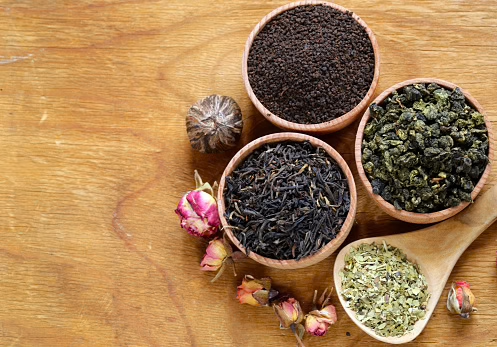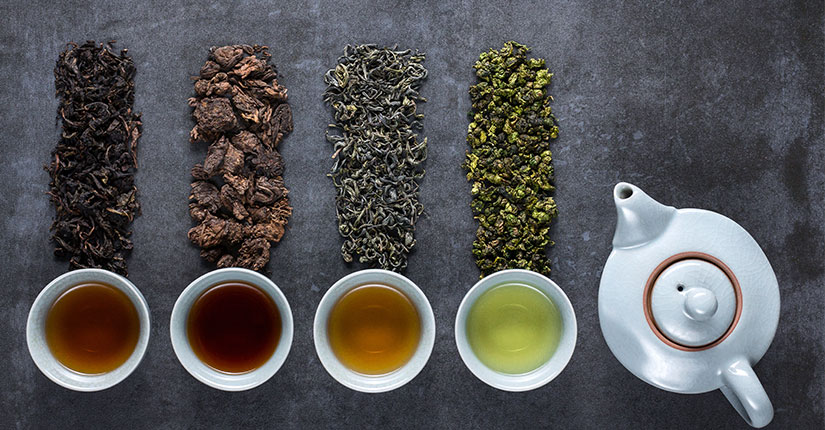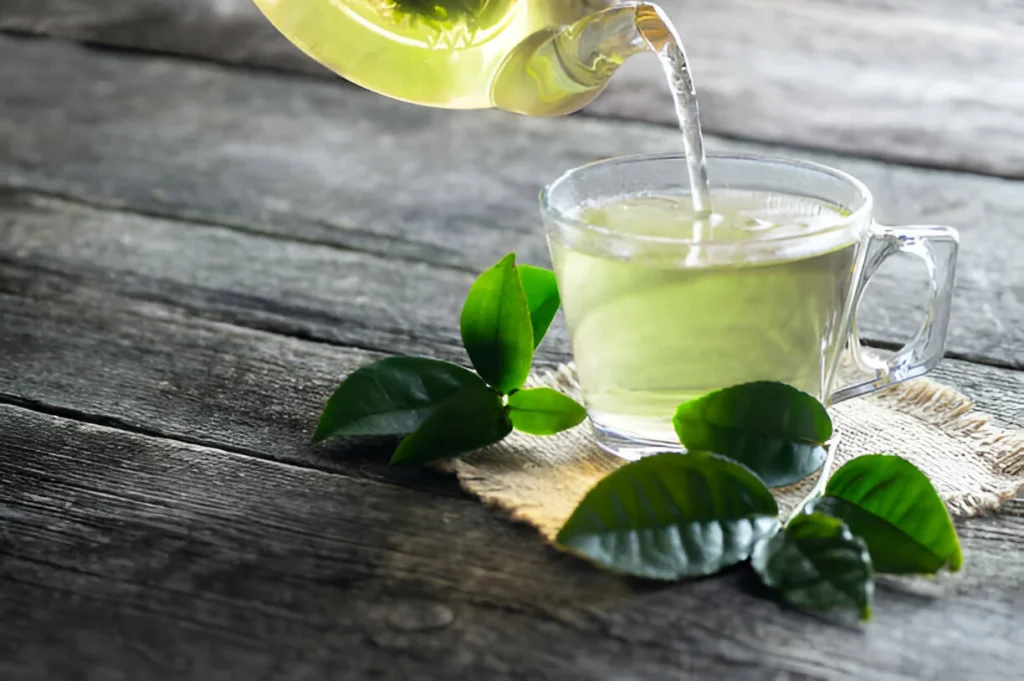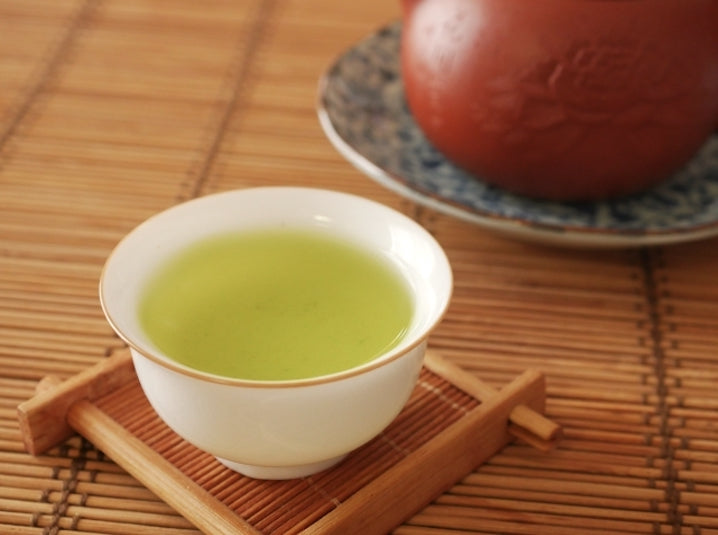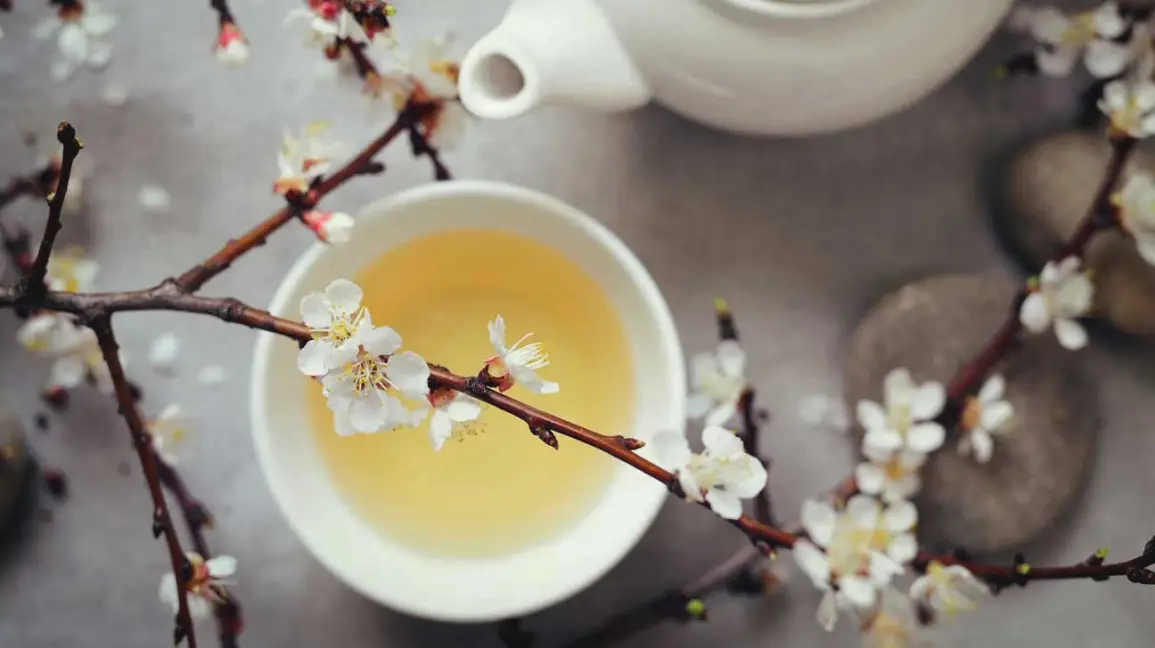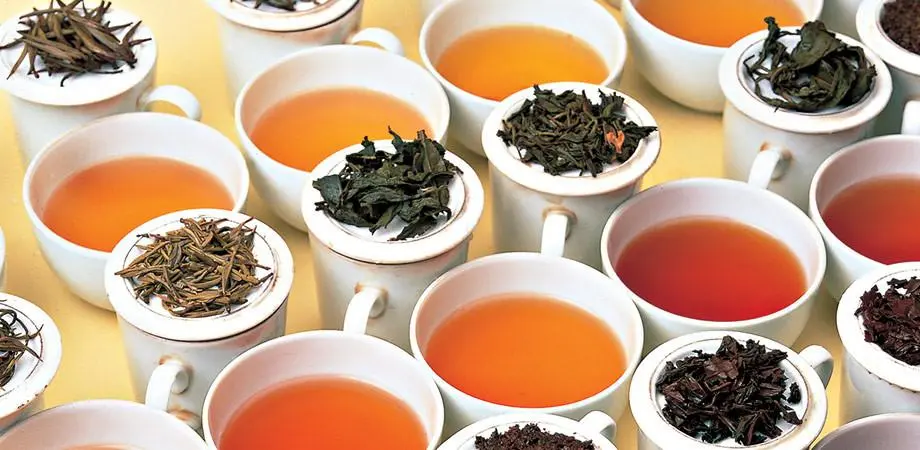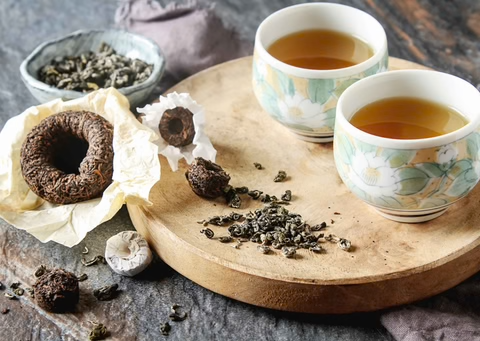Tea types, including white, green, oolong, and black teas, all originate from the same plant, Camellia sinensis. Their unique flavors, aromas, and characteristics stem from differences in how the leaves are processed and the degree of oxidation they undergo. Here’s a detailed comparison of their processing methods and the resulting taste differences.
1. White Tea
Processing
- Minimal Processing: White tea is the least processed of all tea types.
- Leaves are plucked (often as young buds with minimal handling).
- Withered under natural sunlight or indoors to dry slowly.
- No rolling or additional oxidation occurs.
- Oxidation: Barely oxidized, as the natural enzymes in the leaves are not activated.
Taste Profile
- Delicate and Light: White tea has a mild flavor with subtle floral, fruity, or honey-like notes.
- Smooth Texture: Often lacks the astringency or bitterness found in more processed teas.
2. Green Tea
Processing
- Quickly Halted Oxidation: Green tea is minimally oxidized but undergoes additional steps to preserve its green color and fresh flavor.
- Leaves are plucked and immediately heated (steamed or pan-fried) to deactivate enzymes.
- After heating, leaves are shaped (rolled or twisted) and dried.
- Oxidation: Less than 10%, as oxidation is halted early.
Taste Profile
- Grassy and Vegetal: The flavor is fresh and herbaceous, often with sweet or nutty undertones.
- Varietal Differences:
- Japanese green teas (e.g., Sencha, Matcha): Steamed, resulting in a fresher, more vibrant flavor.
- Chinese green teas (e.g., Longjing): Pan-fried, producing a nuttier, toastier profile.
- Astringency: Can become bitter if brewed improperly (e.g., with overly hot water).
3. Oolong Tea
Processing
- Semi-Oxidized: Oolong tea falls between green and black tea, with partial oxidation ranging from 15% to 80%.
- Leaves are withered, bruised, and rolled to encourage oxidation at varying levels.
- Oxidation is carefully monitored, then halted by heating.
- Leaves are shaped into tight balls (e.g., Tie Guan Yin) or twisted strands (e.g., Wuyi Rock Tea).
- Oxidation: Varies significantly, resulting in a wide flavor spectrum.
Taste Profile
- Complex and Varied:
- Lightly Oxidized Oolongs: Floral, sweet, and fresh, similar to green tea but less astringent.
- Darkly Oxidized Oolongs: Roasty, nutty, and rich, akin to black tea but smoother.
- Full-Bodied: Offers layers of flavor that change over multiple infusions.
4. Black Tea
Processing
- Fully Oxidized: Black tea undergoes the most oxidation, which darkens the leaves and deepens the flavor.
- Leaves are plucked, withered to reduce moisture, and rolled to release enzymes.
- Fully oxidized before being dried to lock in the flavor.
- Oxidation: 100%, creating bold flavors and darker color.
Taste Profile
- Robust and Bold: Black tea has a strong, malty, or earthy flavor with varying degrees of sweetness or smokiness.
- Regional Variations:
- Assam (India): Malty and brisk.
- Darjeeling (India): Muscatel and floral.
- Ceylon (Sri Lanka): Bright and citrusy.
- Astringency: More pronounced than other teas, especially if brewed for longer times.
Comparison Table: Processing and Taste
| Tea Type | Oxidation Level | Processing Steps | Taste Profile |
|---|---|---|---|
| White Tea | Minimal (0-5%) | Withered and dried; no rolling or heating. | Delicate, light, floral, and smooth. |
| Green Tea | Low (0-10%) | Heated (steamed or pan-fried), rolled, and dried. | Grassy, vegetal, fresh; nutty (Chinese) or vibrant (Japanese). |
| Oolong Tea | Moderate (15-80%) | Withered, bruised, partially oxidized, rolled, and dried. | Complex; floral, sweet, or roasty depending on oxidation. |
| Black Tea | Full (100%) | Fully oxidized after withering, rolling, and drying. | Bold, malty, earthy, or smoky with pronounced astringency. |
Key Differences
- Oxidation: The extent of oxidation affects both flavor and color:
- White Tea: Least oxidized; light and floral.
- Black Tea: Fully oxidized; robust and dark.
- Processing Intensity:
- White Tea: Minimal processing retains natural flavors.
- Green Tea: Heat stops oxidation early for freshness.
- Oolong Tea: Complex processing creates a wide flavor range.
- Black Tea: Full oxidation deepens flavor.
- Taste Complexity:
- White and Green Teas: Softer, fresher, and less intense.
- Oolong and Black Teas: Richer, more robust, and layered.
Conclusion
The differences in processing methods significantly influence the oxidation level, resulting in distinct taste profiles and characteristics for each type of tea. White tea is light and subtle, green tea is fresh and grassy, oolong tea offers complexity and versatility, and black tea delivers boldness and depth. By understanding these nuances, tea enthusiasts can appreciate the unique qualities of each variety and choose the perfect brew for their palate.
Comparing and Contrasting Processing Methods and Taste Differences: White, Green, Oolong, and Black Teas
